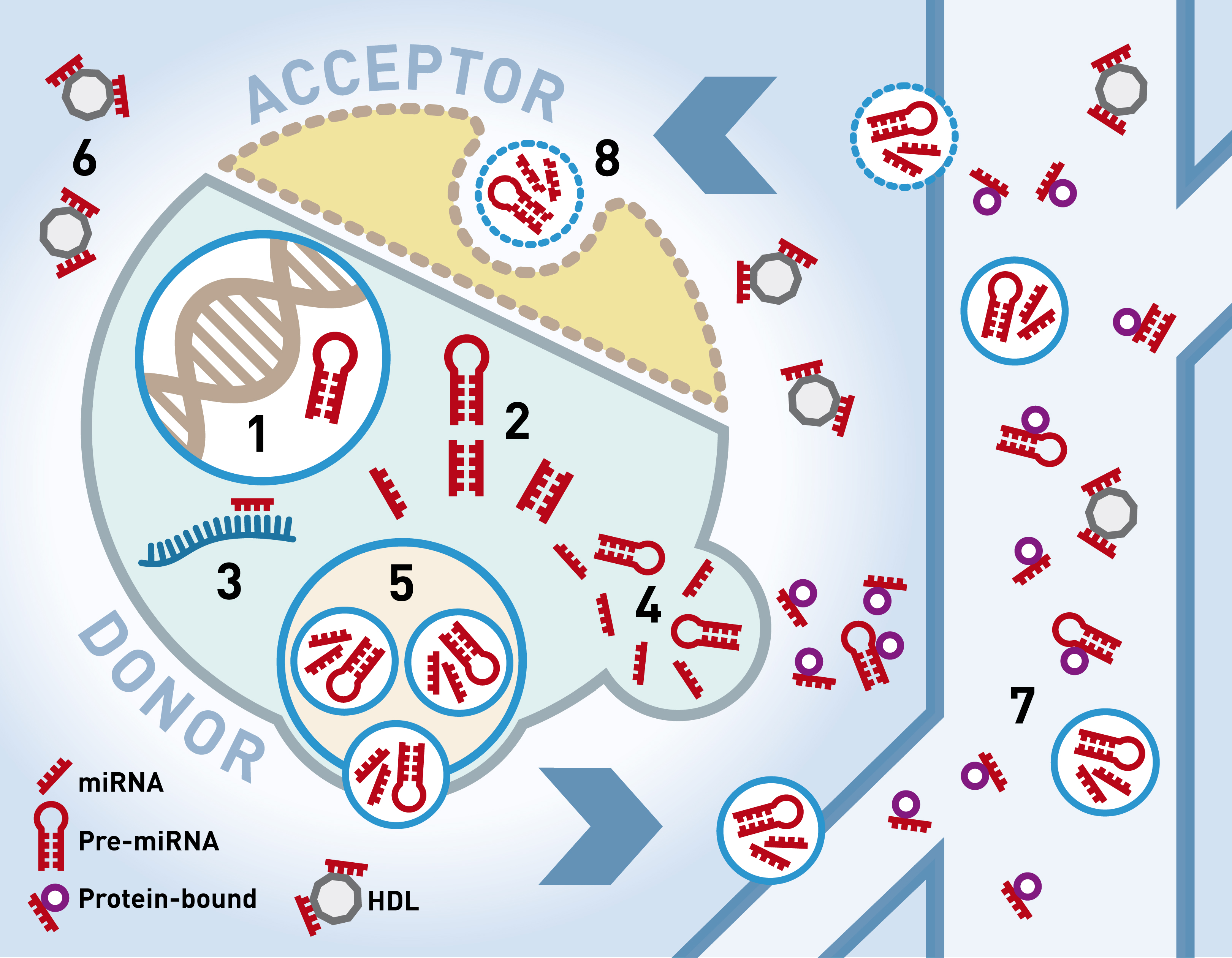microRNA biomarkers
microRNA biomarkers
The expression of microRNAs is highly regulated. The expression of about 10 % of all microRNAs is enriched or even restricted to a specific type of tissue or cell. These microRNAs are crucial regulators of tissue function by regulating cell differentiation and tissue homeostasis. The remaining microRNAs are abundantly expressed in various tissues and cell types. Their function is frequently associated with cell proliferation, differentiation and programmed cell-death.
It has been shown that microRNA expression is subject to change during the onset and progression of disease. This has led to the application of microRNAs as disease biomarkers.
MicroRNAs are actively released from cells into the supernatant. This mechanism greatly facilitates the application of microRNAs as disease biomarkers. The presence of circulating microRNAs has been detected in various biofluids including serum/plasma, urine, and saliva.
Circulating microRNAs are released within vesicles as well as in association with RNA binding proteins and appear to be very stable in biofluids. Close to 50 % of the RNA contained in extracellular vesicles in serum and plasma are microRNAs. The remaining 50 % are other non-coding RNAs and to a small extent mRNAs.
Circulating microRNAs serve as non-invasive biomarkers for human diseases. MicroRNA biomarkers have utility for the following applications:
- toxicology: tissue health surrogate
- diagnosis: early diagnosis of asymptomatic diseases
- monitoring: detection of treatment response or adverse events








